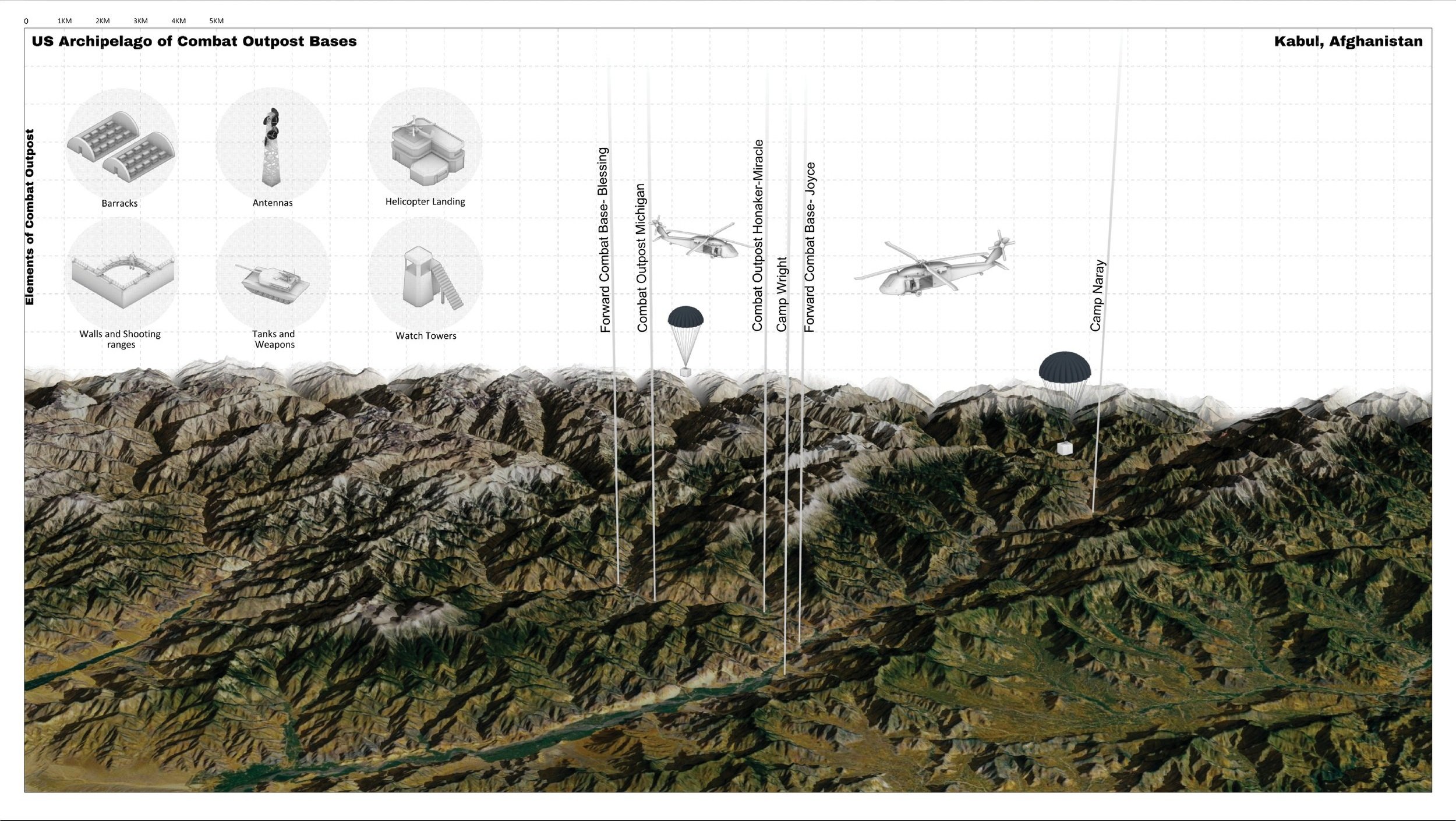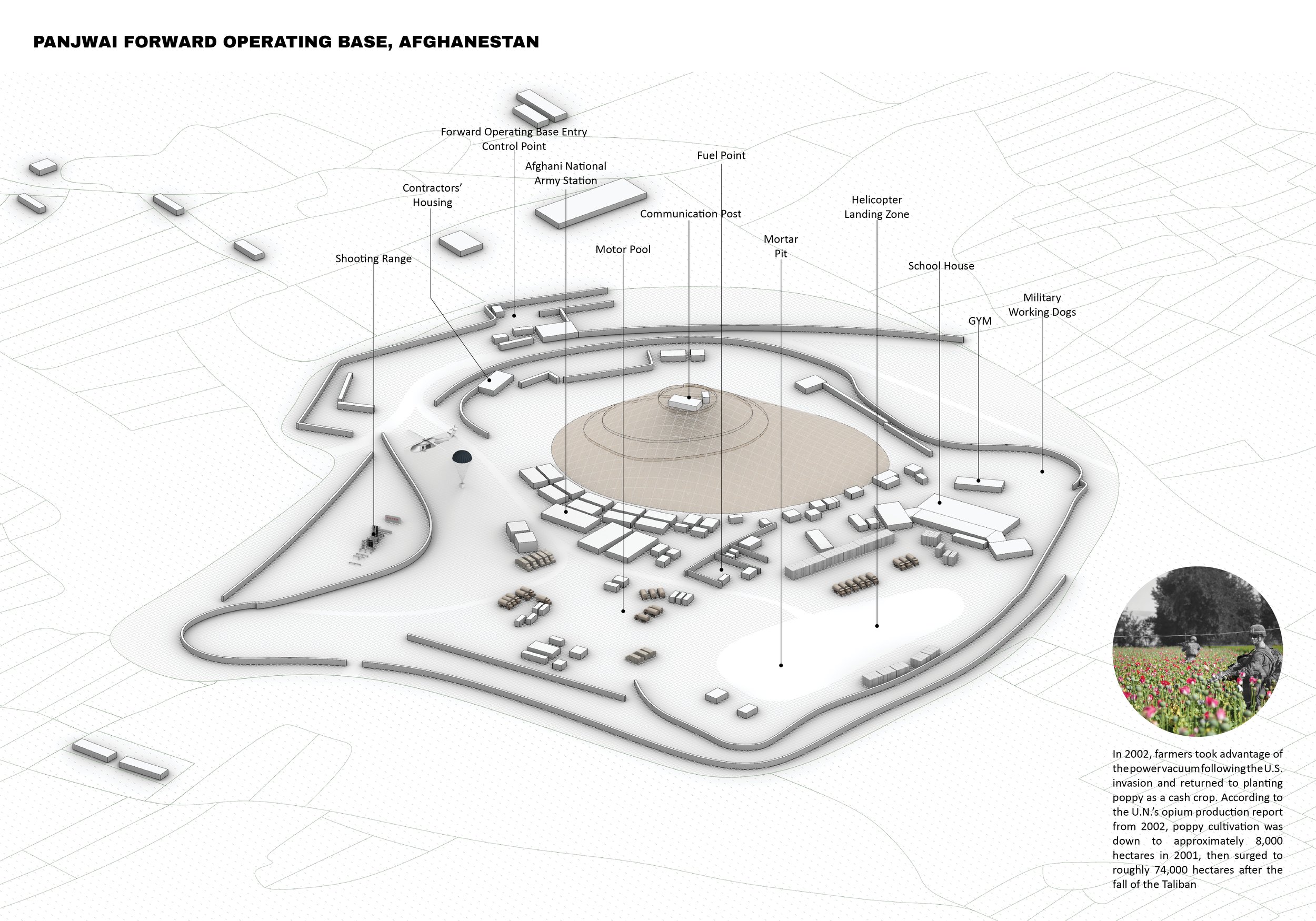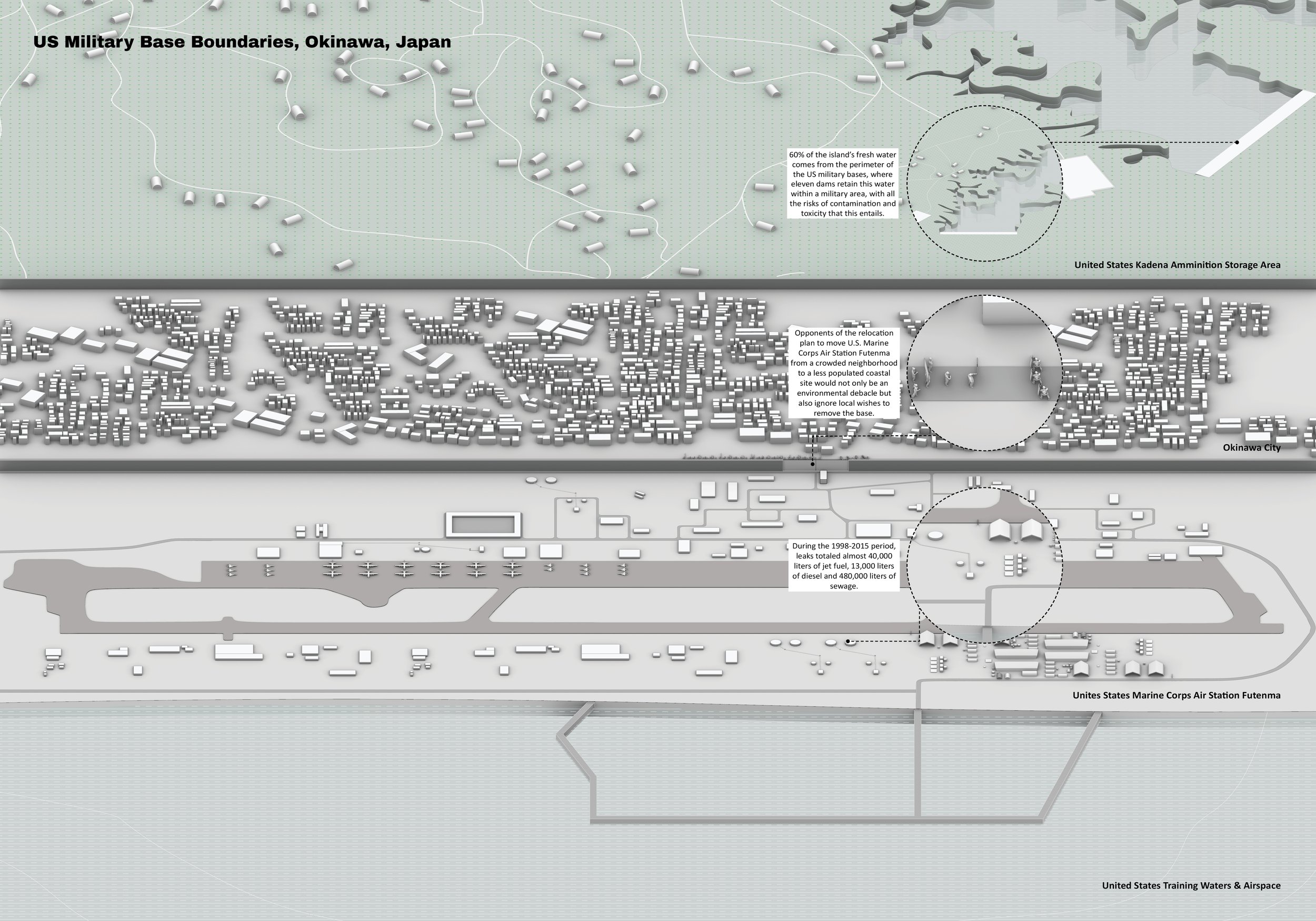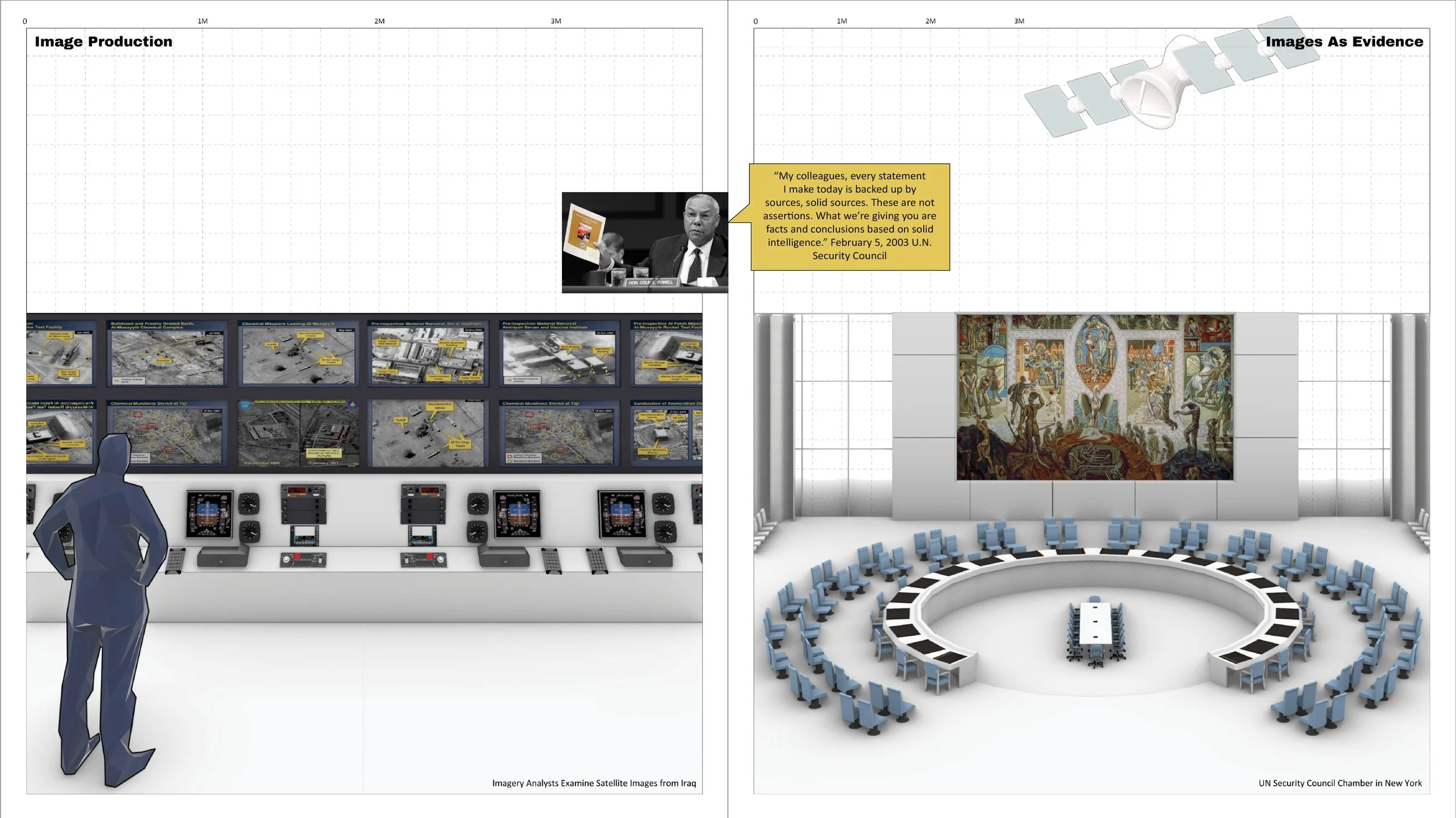Archipelago of US Borders
Archipelago of US Borders
The project interrogates the infrastructure of the United States Defense Industrial Base in order to expose the contemporary scale of its military operations and the environments it occupies and co-produces.
The Defense Industrial Base is a global infrastructure that reinforces and supports the planetary expansion of US borders through military bases and installations. Understanding the configuration of this infrastructure is a key step toward understanding US imperialism in the 21st century.
In his essay Keyword: Infrastructure, anthropologist Ashley Carse outlines the way in which the vagueness of the word “infrastructure” was adopted by NATO in 1949, as a generic term to denote all fixed installations that enable operations of military forces. The term “infrastructure” in the post-war era became thus intertwined with military coordination, logistics, and international economic development.
The magnitude of the infrastructure of the US Defense Industrial Base extends beyond warfare, operating across spatial networks, material devices, and intangible technologies; across the air, water, and land, from orbiting satellites to submarine optic fibre cables. Its footprint coincides with a global archipelago of ports, airfields, radar, missile testing facilities, warehouses, barracks, suburban towns, golf courses, and toxic industrial sites. Its impact extends beyond its sovereign boundaries. Forty-three components of various military installations are identified in the atlas, while a deeper investigation into three case studies shows different forms of territoriality through which US bases operate across multiple scales and entanglements.
The three case studies that will be presented are:
01 HYPERLOCAL_Confiscated land in Afghanistan,
02 HYPERLOCAL_Toxic Outflow of Military Bases in Okinawa, Japan
03 HYPERGLOBAL_The Ecology of surveillance and data collection
Crit: Marco Ferrari, Columbia University, GSAPP



Manifesto: Global reconfiguration of the infrastructure
I challenge the US military’s notion of “Infrastructure as world-making”. The word infrastructure has been used by NATO since 1949 to enact military projects through the coordination of physical installations or bases at a planetary scale, representing the interest of a single nation. If the violence produced by the agents of this infrastructure is distilled or removed, then what is left is a highly sophisticated ecology of devices present in nearly 800 sites across seventy territories and countries worldwide. This manifesto calls for a Global reconfiguration of the infrastructure and the architecture of the defense industrial base to serve the interest of the “commons”, hence the bases would not belong to any single sovereignty, but to the parliament of climate change. Transforming all the military bases worldwide into an archipelago of devices that can address challenges at planetary scale, such as climate change.
The architecture transforms into a network that serves the needs of the climate institute, becoming sites of local participation and debate, serving the larger parliament. The isolated bases become integrated within their local context, making the actions within the reconfigured bases visible.







